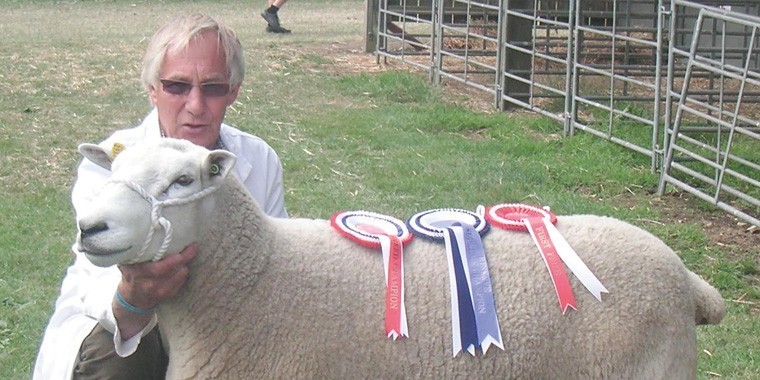I really was not surprised by the response from some of my fellow sheep breeders to last month’s (February) sheep topics; responses that led me to question both the age and veracity of some. In particular it was my introductory sentences that were a cause for concern. I did venture to say that some might not be prepared to admit to remembering the 1969 hit song Windmills of My Mind. Even though a mere cursory glance suggested they would most certainly have been around at the time, the insistence of some that they were simply unable to recollect the song led me to conclude that they were either in denial about their advancing years, their memories were failing them or that they really were ‘there’ in the sixties, as they say: “If you can remember the sixties you weren’t there”.
To return to this month: for a few, lambing will already be done; for many others underway; and for the remainder, rapidly approaching. As lambing progresses, thoughts may well turn to the marketing of this year’s lambs. Trade is still good and market prices for lambs even picked up last week; with continued strong domestic demand and growing demand from the Chinese market driving up New Zealand lamb prices, things are looking promising for this season and not just for lambs. This should generate sufficient confidence to put a bit of a spring into the autumn breeding stock sales.
It is not so very long ago that we were all told that our target weight range for finished lambs should be 17kg to 21kg on the hook. Lambs that failed to meet this weight range were often heavily discounted as being out of specification; now, for a number of reasons, the market is seemingly quite happy to take lambs significantly above this target range at sensible prices. Weight in lambs has now become money, and as slaughter weights have crept up so has the average age at slaughter; it’s certainly not that all sheep have suddenly got bigger.
We are now in a situation which really brings into question how we market our sheep meat. For over 50 years we were encouraged to finish lambs quickly, to derive the maximum benefit from the higher daily gains and efficiency of young lambs; the epithet hogget has at times been used by the trade as an excuse to discount lambs once they enter the new year, the implication being that hogget was poorer quality.
This begs the question as to why, as an industry, we are not being more honest and canny about the way in which we market our sheep? In reality we are selling two different and quite distinctive products, lamb and hogget, so why not actually market them as such? If you add mutton into the mix we have three quite distinctive and excellent sheep meat products. There is an old saying “mutton dressed up as lamb”, a somewhat derogatory term, but it is an adage that brings us back to the title, age and veracity.
We really do not need to tell any untruths or half truths about our sheep meat or attempt to dress it up as something it is not. We have three quite distinctive and excellent quality sheep meat products; products that as an industry we could and should be usefully promoting as meats in their own right without the need for any affectation.
Hogget has quite different eating qualities and flavour to a young lamb. Personally I prefer a nice piece of the former, a view, with which I know numerous sheep producers will concur. If they are going to have a “lamb” for the freezer, the majority will select something a bit older and larger. It’s a choice based not simply on the fact that it was a rough old lamb that, having struggled most of its life and being left behind when all its contemporaries had departed for the market, had finally managed to make something, although, being pragmatic, that may well be a contributory factor. It’s a choice made in no small part because they enjoy the fuller, richer flavour of a hogget, particularly if it is wholly grass fed. Additionally there is the bonus of a larger leg of hogget carrying sufficient meat for there to be ample left over for that tasty, traditional shepherd’s pie mid week.
A long-established marketing practice, where there is competition between products, has been to introduce a new brand. For example, with four brands of a product each with, let’s say, an equal share of the total market, if a new brand is introduced, the market is now split five ways. If one happens to own two rather than the previous one brand, market share potentially increases from one 25% share to two 20% shares. A rather simplistic example, but I’m sure you get the picture; sheep meat producers are in competition with other meats (I do not include plant-based “meats” in this), so why not market our excellent sheep meat products (not product) better and to our advantage?




